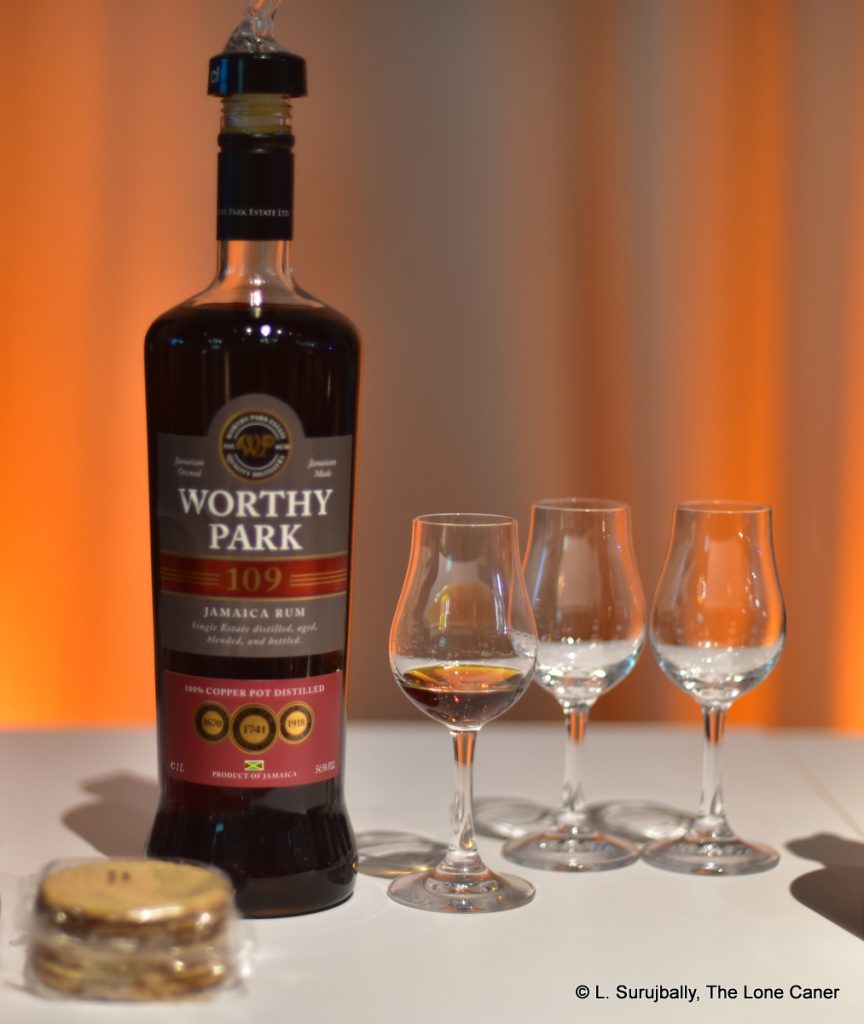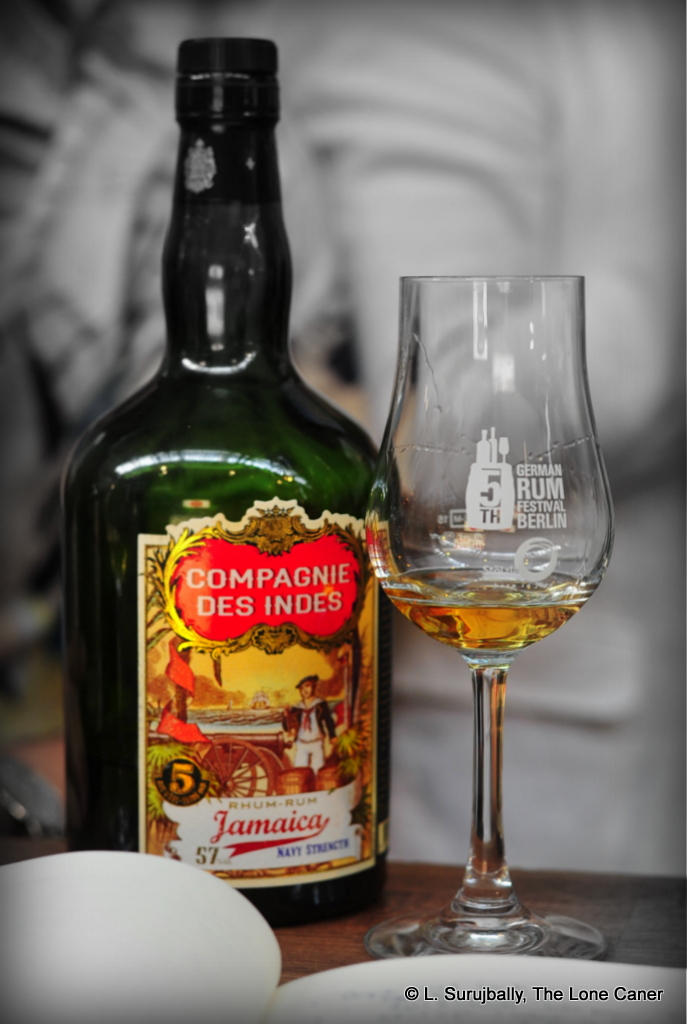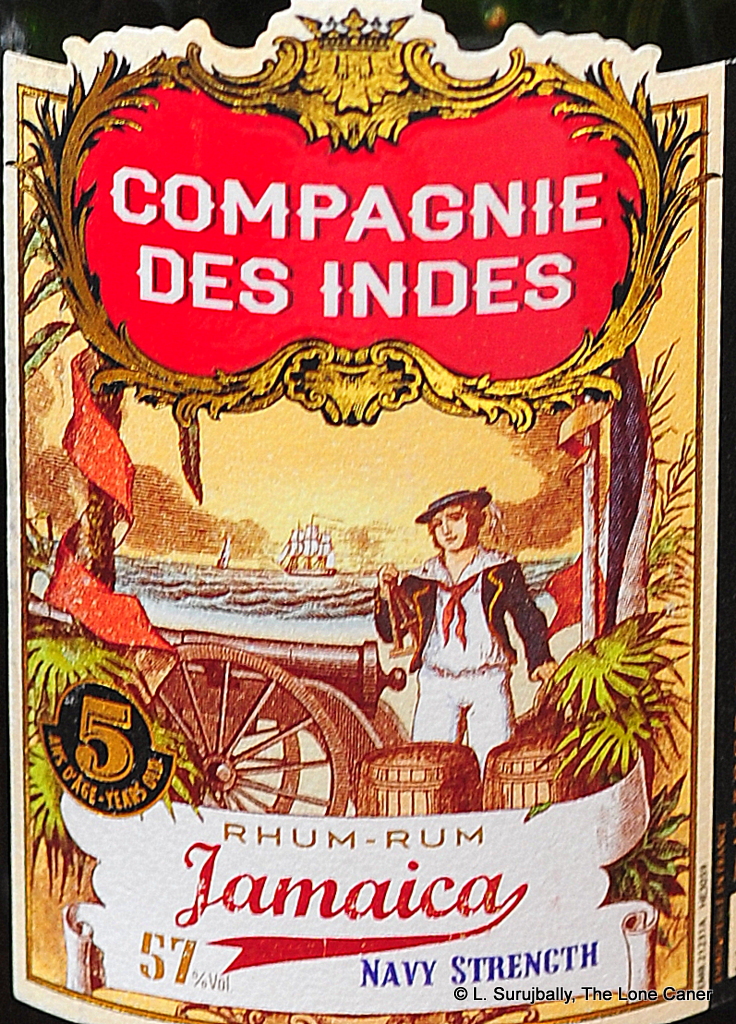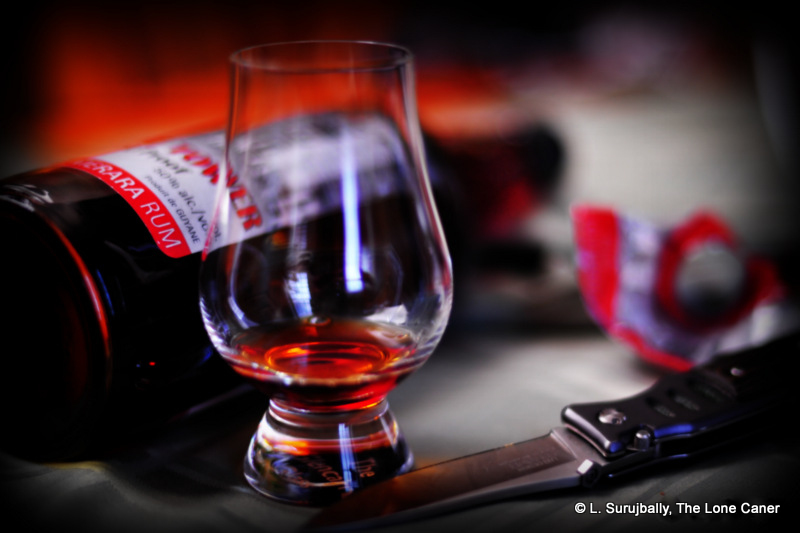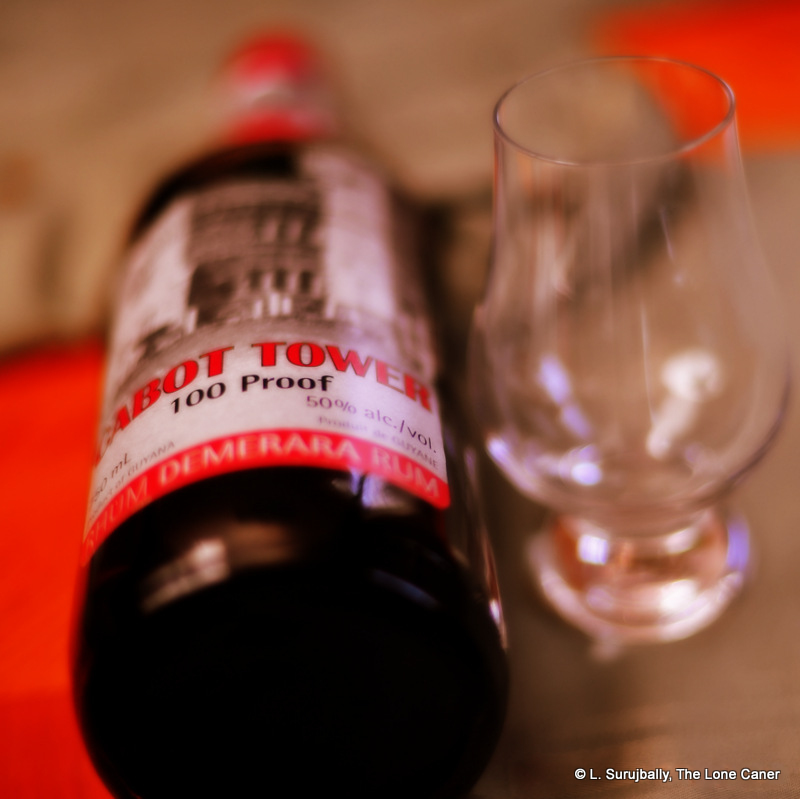Worthy Park’s “109” is a recent addition to the Jamaican distillery’s brand portfolio, with a storied history from its first announcement in 2020. The Jamaican distillery wanted fill out its low-to-midrange line with a darker, slightly aged and higher proof rum to complement the Rum Bar White Overproof, Silver and Gold, and while they maintained that the objective was not to go up against Smith & Cross, it’s hard to look at the specs and not conclude that at least some market-share jealousy and subtle dick-measuring was going on.
Initially the rum was called “Gunpowder Proof” – a play on the old navy strength of 54.5% – and as you can imagine, it excited strong interest, even if the stated purpose of the rum was to attend the bartending and cocktail circuit. Labels were all set to go until, in an echo of Banks DIH’s problems with “Demerara rum” a decade earlier, Pusser’s objected and issued a cease-and-desist-you-varlets order, claiming the name as their own trademarked title. WP shrugged, airily and dismissively said “we don’t bank the success of our rum on a name” and changed it to “109” which I hope requires no further explanation.
Like Alex Sandu of the Rum Barrel who reviewed the rum last year, I also believe that the specs suggest a rum meant to bridge the bartender-cocktail circuit rums of the Rum Bar line with the more upscale and defined sipping rums of the Worthy Park range. The core stats for the 109 support this assertion: it comes from molasses, comprising two pot still distillates – WPL 1 aged for three years in ex-Bourbon casks, and some unaged WPE 2. There are no additions except caramel to make it darker, and we are not informed as to the ratios of the two components.
It’s an intriguing production profile, and what comes out the other end is surprisingly simple, with a few clear and distinct notes: firstly caramel, toffee and blancmange set off with molasses and brown sugar; then some light, tart sweet fruits like cherries, strawberries, bananas, papaya and pineapple, plus a mango or two. Thirdly, one can sense cucumbers and red pimentos soaked in light vinegar, a sort of sour note, and lastly there’s some unsweetened, almost bitter salted chocolate and coca cola. That’s not bad at all for something so young.
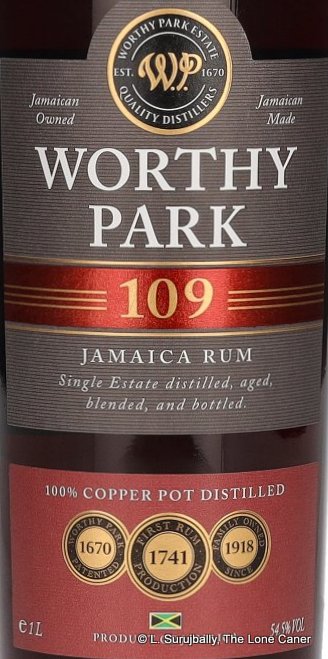 The palate follows these four notes without substantial deviation. Of course, the taste in the tongue is sharp – that’s a function of both youth and proof point – and the whole thing is salty and crisp, bordering on the acidic. The whole thing is a mix of chocolate, licorice, caramel, toffee and gooseberries (plus some pineapple and unripe green mangoes), with just enough musky-sweet deriving from the molasses and brown sugar to make it an interesting rum to try by itself. It’s a bit rough and tumble, which is nice, and the finish channels some Trenchtown badass with nuts, molasses, coffee grounds, salt and pepper.
The palate follows these four notes without substantial deviation. Of course, the taste in the tongue is sharp – that’s a function of both youth and proof point – and the whole thing is salty and crisp, bordering on the acidic. The whole thing is a mix of chocolate, licorice, caramel, toffee and gooseberries (plus some pineapple and unripe green mangoes), with just enough musky-sweet deriving from the molasses and brown sugar to make it an interesting rum to try by itself. It’s a bit rough and tumble, which is nice, and the finish channels some Trenchtown badass with nuts, molasses, coffee grounds, salt and pepper.
Overall, the melange of solid primary tastes and occasional jagged edges makes the 109 borderline as a sipper – I would not drink it regularly that way myself – but I think it’s excellent for what it was meant to be, and would handily wake up any cocktail you care to dump it into. I’m a simple guy with no real mixing experience, so you’ll forgive me for sticking with that old standby of the rum ‘n’ coke, at which this thing absolutely shines (and look forward to a flurry of notes from various bartenders who want to suggest alternatives and school me better).
So, then: is it gold or pyrite? I can hear you ask. Honestly, I believe the WP 109 is neither: it’s simply an unpretentious, firm, tasty rum that doesn’t forget its backdam antecedents, and yes, it’s definitely not important what they call it — it would be similarly good if they called it The Son of Kong. A little older, a touch less bite, and it would be almost the perfect midrange rum, and given what it costs it’s great value for money to boot. You can’t go too far wrong picking up one of these for the home bar.
(#970)(82/100) ⭐⭐⭐½
